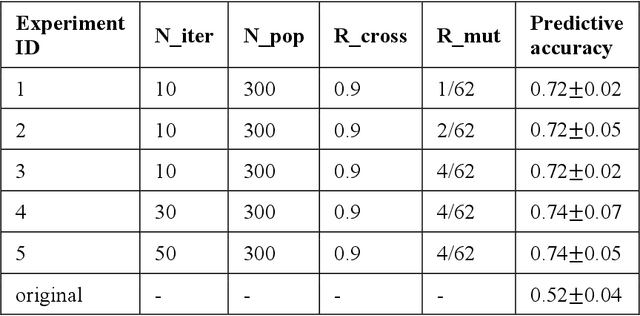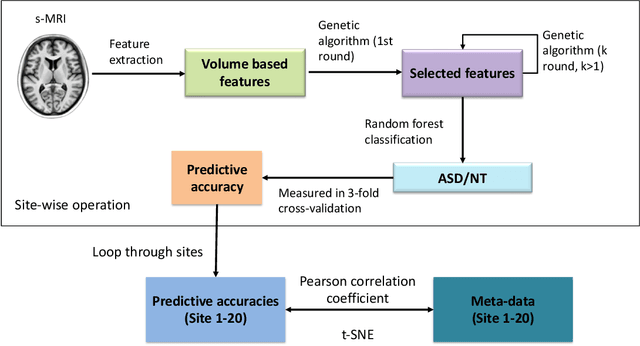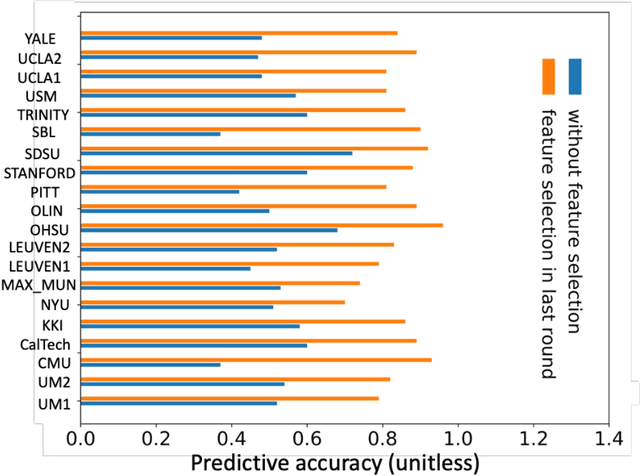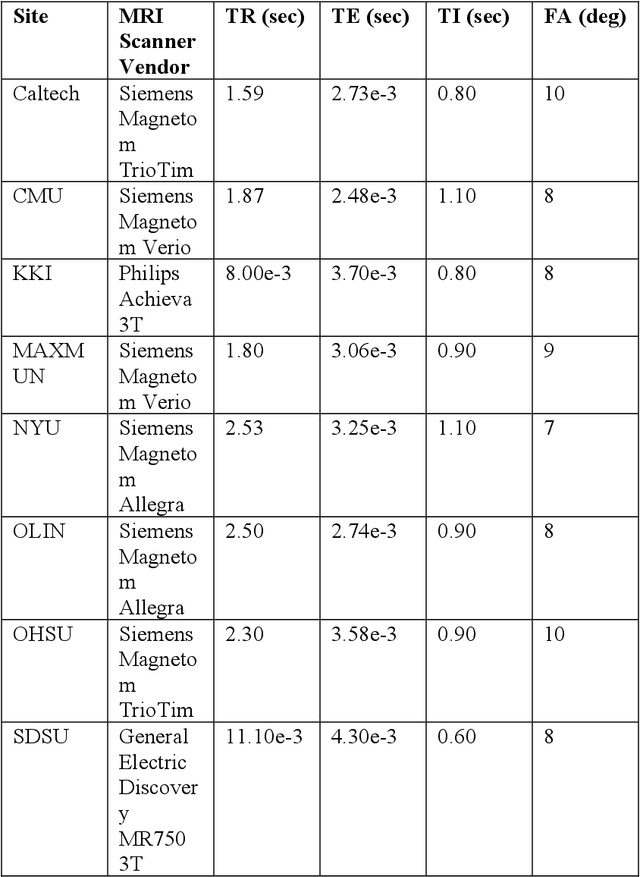Ruimin Ma
Autism Spectrum Disorder Classification in Children based on Structural MRI Features Extracted using Contrastive Variational Autoencoder
Jul 03, 2023



Abstract:Autism spectrum disorder (ASD) is a highly disabling mental disease that brings significant impairments of social interaction ability to the patients, making early screening and intervention of ASD critical. With the development of the machine learning and neuroimaging technology, extensive research has been conducted on machine classification of ASD based on structural MRI (s-MRI). However, most studies involve with datasets where participants' age are above 5. Few studies conduct machine classification of ASD for participants below 5-year-old, but, with mediocre predictive accuracy. In this paper, we push the boundary of predictive accuracy (above 0.97) of machine classification of ASD in children (age range: 0.92-4.83 years), based on s-MRI features extracted using contrastive variational autoencoder (CVAE). 78 s-MRI, collected from Shenzhen Children's Hospital, are used for training CVAE, which consists of both ASD-specific feature channel and common shared feature channel. The ASD participants represented by ASD-specific features can be easily discriminated from TC participants represented by the common shared features, leading to high classification accuracy. In case of degraded predictive accuracy when data size is extremely small, a transfer learning strategy is proposed here as a potential solution. Finally, we conduct neuroanatomical interpretation based on the correlation between s-MRI features extracted from CVAE and surface area of different cortical regions, which discloses potential biomarkers that could help target treatments of ASD in the future.
Meta-data Study in Autism Spectrum Disorder Classification Based on Structural MRI
Jun 09, 2022



Abstract:Accurate diagnosis of autism spectrum disorder (ASD) based on neuroimaging data has significant implications, as extracting useful information from neuroimaging data for ASD detection is challenging. Even though machine learning techniques have been leveraged to improve the information extraction from neuroimaging data, the varying data quality caused by different meta-data conditions (i.e., data collection strategies) limits the effective information that can be extracted, thus leading to data-dependent predictive accuracies in ASD detection, which can be worse than random guess in some cases. In this work, we systematically investigate the impact of three kinds of meta-data on the predictive accuracy of classifying ASD based on structural MRI collected from 20 different sites, where meta-data conditions vary.
 Add to Chrome
Add to Chrome Add to Firefox
Add to Firefox Add to Edge
Add to Edge